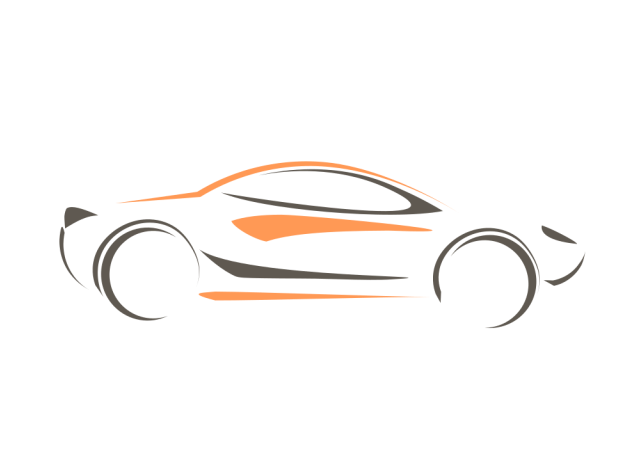7.
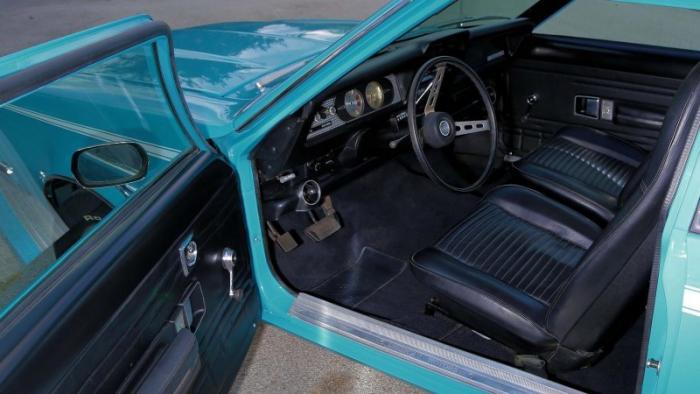
Экономия на разработке положительно отразилась на итоговой цене AMC Gremlin. Автомобиль с 3,3-литровой «шестеркой» (а были еще 3,8 л., 4,2 л. и даже 5,0-литровый V8), механической коробкой передач, без заднего сиденья и подъемного стекла багажника стоил 1 879 $, что было сопоставимо со стоимостью Volkswagen, а дебютирующая через полгода Chevrolet Vega стоила от 2 090 $. Gremlin с Жуком и сравнивали, отмечая его преимущества в ширине, радиусе поворота и большом бензобаке. Потребители приняли Gremlin хорошо: он был мощнее Жука и ощущался как более солидный автомобиль, да и сами американцы менялись, все чаще предпочитая более скромные и экономичные автомобили. Простые агрегаты и минимум оборудования делали его достаточно надежным, что заставляло закрыть глаза на посредственную управляемость, тесноту на заднем сиденье (при его наличии) и практически полное отсутствие багажника.
1971 AMC Gremlin X
| Price: | US $31,500.00 |
|---|---|
| Condition: | Used |
| Item location: | Sylmar, California, United States |
| Make: | AMC |
| Model: | Gremlin |
| SubModel: | Gremlin X sunroof |
| Type: | Coupe |
| Trim: | X |
| Year: | 1971 |
| Mileage: | 30,971 |
| VIN: | A1S465E237744 |
| Color: | White |
| Engine size: | 3.8 I6 |
| Number of cylinders: | 6 |
| Fuel: | Gasoline |
| Transmission: | Manual |
| Drive type: | RWD |
| Interior color: | Red |
| Options: | Leather Seats, Sunroof |
| Vehicle Title: | Clear |
| You are interested? |
oh man, how can I describe this very unique and rare 1971 AMC Gremlin X with factory Sliding ragtop sunroof. It is the most unique Gremlin X out there with white exterior and desirable red interior.The factory sliding sunroof was experimental for the year 1971 and there are very few of them made and exist,by some it is less than 50 but the years 1972-73 there were more made and available so this car is probably the rarest of the Gremlins.I bought the car 11500 (there are records for it), overhauled the engine in the best quality (over $6700 in labor and parts with receipts) NOT EVEN 1000 miles on rebuilt engine,tires,power steering,finding original AMC rims and powder coat them,radiator,fan,performance parts and much more so don’t expect to get it for pennies, I am not in need of the money and have no rush to sell it.I am the second owner who bought it from original owner in Portland Oregon and drove it all the way to Los Angeles CA. The car was running good but it was leaking oil all over the place which caused clutch slipping and power loss so when I arrived, I addressed the issues with overhauling the whole engine completely,putting ISKY competition cams and new 4 barrel Holley carb, the manifold is high output offenhauser, new performance cables,distributor,air intake.It has a 3.8 I6 with 3 on floor manual transmission.PS,I put power steering on the car, Disc brakes in front,brand new shocks, brand new BF Goodrich tires, excellent interior in red, great carpets and weather seals.Drives great and with dual performance mufflers and the cam sounds like V8.The car is almost show quality and very presentable, it brings memories and smiles back to faces, also it brings eyebrows going up to faces as well because people expect to see low price on once a cheap car but not anymore, Gremlins are going strong in the collectors market and they are not yesterday underdogs anymore.This is one of a lifetime chance to own a very nice original gremlin so please bid with confidence and fee free to ask me any questions.My rating and history is a good proof of my personality, i look for the best and I sell the best.people with no history have to contact me prior to bidding otherwise their bid will be cancelled.Thank you and happy bidding. I reserve the right to end this auction in any given time since the car has lots of interest locally.
NOTES ON SOURCES
Our sources for this article included “A Small World to Conquer: Six-Car Comparison Text: AM Gremlin, Chevrolet Vega 2300, Ford Pinto, Simca 1204, Toyota Corolla, Volkswagen Super Beetle, Car and Driver Vol. 16, No. 7 (January 1971), pp. 20-29; the Auto Editors of Consumer Guide, Encyclopedia of American Cars: Over 65 Years of Automotive History (Lincolnwood, IL: Publications International, 1996); Drew Beck, “The Gremlin: AMC’s Successful Compact,” Allpar, 1992, 2006, www.allpar. com, accessed 13 October 2007; Eric Dahlquist, “Big Bug,” Motor Trend Vol. 21, No. 2 (February 1969), pp. 46–48; “Declutching the BUG,” Motor Trend Vol. 20, No. 7 (July 1968), pp. 70-73; and “1970 Gremlin,” Motor Trend Vol. 22 No. 3 (March 1970), pp. 70-72, 106; “Designing the Future at AMC: Part III: Bob Nixon and the Sizzling Sixties,” Special Interest Autos #161 (September-October 1997), pp. 46-53; The Story of Jeep (Iola, WI: Krause Publications, 1998); and “Vince Geraci: Living in Style,” Collectible Automobile Vol. 22, No. 2 (August 2005), pp. 66–75; John Gunnell, ed., Standard Catalog of American Cars 1946-1975, Revised 4th Edition (Iola, WI: Krause Publications, 2002); Tony Hogg, “The Indestructible Insect,” Car and Driver Vol. 16, No. 7 (January 1971), pp. 66-67; Charles K. Hyde, Storied Independent Automakers: Nash, Hudson, and American Motors (Detroit: Wayne State University Press, 2009); Alfred Koos, “A Brief History of the Gremlin,” GremlinX.com, n.d., www.gremlinx. com/ Gremlin-history.htm, accessed 13 October 2007; Graham Robson and the Auto Editors of Consumer Guide, Volkswagen Chronicle (Lincolnwood, IL: Publications International Ltd., 1996); Todd Ruel’s 29 July 2006 interview with Bob Nixon (Torq-o.com, 6 October 2007, www.torq-o. com/Podcasts/podcasts.html, accessed 7 December 2009); and Don Sherman, “Road Test: AMC Gremlin X: They think 80 hp and 2600 pounds is funny? Tell ’em it’s a Porsche,” and “Porsche Power to the Small-Car People, Car and Driver Vol. 22, No. 11 (May 1977), pp. 103-106.
This article’s title, inevitably, was suggested by the film Gremlins (produced by Mike Fennell and Steven Spielberg, directed by Joe Dante, written by Chris Columbus, United States, Warner Bros., 1985).
9.
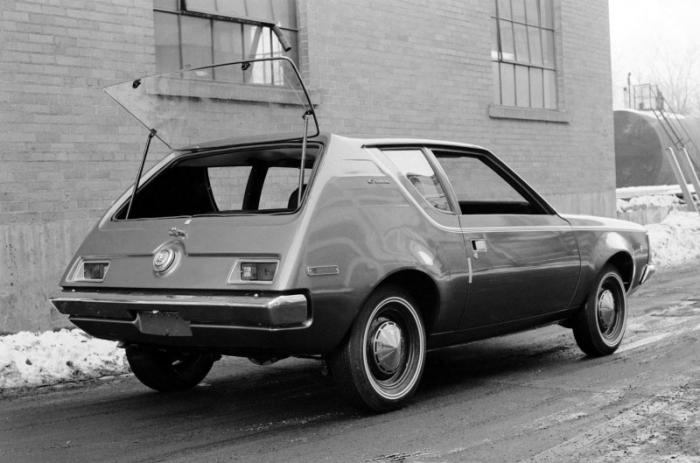
В 1971 году AMC предложили пакета Gremlin X с красивыми колесами, контрастными полосами на кузове и доработанным интерьером, но главным катализатором продаж стал топливный кризис: больше всего Gremlin было продано в 1974 году. Производство продолжалось до 1978 года. Реализовать удалось более 670 000 автомобилей, что, конечно, капля в море (General Motors продал больше полноразмерных седанов только в 1970 году), но достаточно, чтобы стать вторым бестселлером в истории AMC. Да и запомнился Gremlin, главным образом, своим забавным внешним видом, тогда как Vega – на глазах ржавеющим кузовом, а Pinto – пожарами, возникающими при наезде сзади… В общем, инженеры и менеджмент AMC все сделали правильно!
THE CUT-DOWN HORNET
The ever-resourceful Dick Teague, AMC styling VP, was already working on it. Back in 1966, Teague and stylist Bob Nixon had discussed the possibility of a shortened version of the Hornet, which was then in development. Its engineering would also be reminiscent of the production AMX: just as the AMX was a cut-down Javelin, the new subcompact would be a cut-down version of the Hornet. Nixon created a series of sketches along those lines, which Teague liked.
On an airline flight that fall, Teague presented the idea to Gerry Meyers, AMC’s VP of product development. Lacking any of Nixon’s design studies, Teague sketched the design on the only thing he had at hand — the back of an air-sickness bag. Meyers liked the idea, in large part because its tooling costs would be very low.
AMC showed a concept version of the new design at the New York auto show in April 1968 under the name AMX-GT. The AMX-GT was a trial balloon and AMC did not suggest any plans to build it. Nonetheless, public response was generally favorable and plans for the production model went forward. Perhaps mindful of Chrysler’s success with the Plymouth Road Runner, American came up with a cute name for its subcompact, with a cute, cartoon mascot to go with it: AMC Gremlin.
Charlie’s 1975 AMC Gremlin X, known as “Cool Factor X,” shows off a stylized version of the Gremlin mascot. (Photo: “cool2” 2006 Gremmie; used with permission)
Structurally, the AMC Gremlin was a Hornet shorn of 12 inches (305 mm) of wheelbase, trimming its overall length by 18 inches (457 mm). At 161.3 inches (4,097 mm), the Gremlin was only 3 inches (76 mm) longer than a Beetle, although the AMC looked significantly bigger. It was only fractionally narrower than the Hornet, although it was around 200 pounds (90 kg) lighter. The similarity allowed a great deal of commonality: The Gremlin shared its big brother’s front suspension, steering, brakes, although the rear leaf springs were shortened, most of the rear legroom was extracted, a fold-down rear seat was added to increase its cargo space.
Despite the commonality, the Gremlin was not just a cut-down Hornet, although in 1970, Teague told Motor Trend‘s Eric Dahlquist that they’d built a prototype of just such a car, which would’ve been dubbed the Wasp, another old Hudson name. Instead, the Gremlin had a distinctive wedge shape, ending in a sharp “Kammback” tail (an aerodynamic technique named for the German aerodynamicist Wunibald Kamm, who had outlined it back in the 1930s). The Kamm tail was theoretically a drag-reducing measure, but we assume that Teague and Nixon chose it mostly to give a stylistic rationale to the truncated shape.
A battered 1970½ AMC Gremlin. First-year Gremlins were 161.3 inches (4,097 mm) long and weighed about 2,640 lb (1,200 kg). Compare the slimmer bumper with the bulky post-1973 5 mph (8 km/h) bumper on Charlie’s Gremlin X, below. (Photo: “Wiki cars 045” 2007 Karmann; resized and used under a Creative Commons Attribution-ShareAlike 3.0 Unported license)
Although the AMC Gremlin looked like a hatchback, a design becoming popular in Europe for small cars, it had no tailgate, although a flip-up rear window was optional, allowing cargo to be loaded through the rear. Teague explained to Dahlquist that American had avoided the hatchback because it would have reduced structural rigidity. That much was true — hatchbacks are significantly less rigid than coupes or sedans — but the real reason was that there was no money for its development. In fact, the entire development cost of the Gremlin was a modest $12 million, significantly less than Ford spent for its new Pinto subcompact and one-fifth what AMC spent on the Pacer a few years later.
In a surprisingly candid interview with Motor Trend, Teague made no apologies for the Gremlin’s unusual styling, saying he hoped it would be an attention-grabber. It was no beauty, to be sure, but it was certainly distinctive and unlikely to be mistaken for anything else, even its Hornet cousin.
The business end of Charlie’s 1975 AMC Gremlin X, which has the optional V8 engine. AMC’s modern V8 originally appeared in mid-1966, then displacing 290 cu. in. (4,751 cc). In 1970, its deck height was raised and its stroke was increased, bringing it to 304 cu. in. (4,977 cc). In 1975, it cost $154 more than a six, added 258 lb (117 kg) — most of it, sadly, on the nose — and offered 150 net horsepower (112 kW). Charlie’s has been modified to yield approximately 190 net horsepower (142 kW). (Photo: “Gremlin Front” 2006 Gremmie; used with permission)
4.
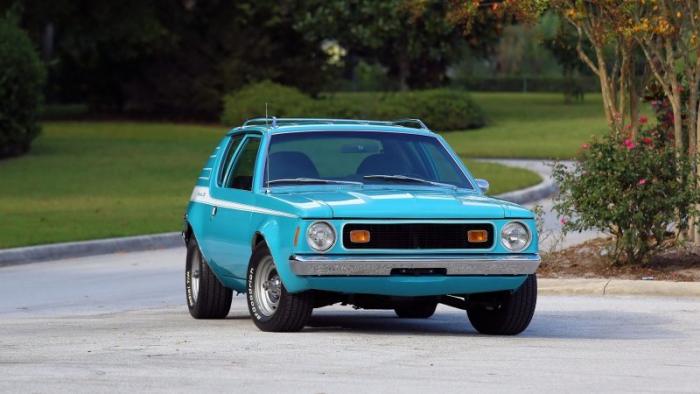
С технической точки зрения, это был самый обычный автомобиль начала 1970-х, с полным отсутствием инноваций. Если General Motors для модели Vega разрабатывал новые материалы, производственные процессы и способы доставки (вертикально в железнодорожных вагонах), то AMC просто собрал пазл из готовых решений. Как и на Hornet на Gremlin использовались агрегаты и компоненты шасси от модели Rambler American, которую Hornet должен был заменить. Поэтому не стоит удивляться не очень современным двигателям, барабанным тормозам и трехступенчатой механике, которой не хватало синхронизаторов на первой передаче… Задняя подвеска Gremlin могла потребовать инновационных решений, но инженеры AMC просто укоротили рессоры Hornet.
Conclusion
The AMC Gremlin was a unique and memorable car that left a significant impact on the automotive industry. Its quirky design, impressive performance, and affordable price made it a hit with drivers, and it paved the way for other subcompact cars in the years that followed. While it may no longer be in production, the AMC Gremlin continues to have a dedicated following of enthusiasts who appreciate its distinctive style and fun-to-drive nature.
Thank you for reading this article about the AMC Gremlin. We hope you found it informative and interesting. If you have any additional questions or comments, please feel free to reach out to us.
Table of Contents
The Birth of the AMC Gremlin
Well, we know that necessity is the mother of invention. And the idea of the Gremlin fruited in the mind of Dick Teague because AMC had one necessity: a subcompact car! With Ford and General Motors bossing the segment, the AMC was stuck in limbo due to poor financial strength. The designing team of Bob Nixon and Dick Teague wasn’t ready to give up, though, as they took reference from their own cars like the AMC Javelin and Hornet for designing a new car!
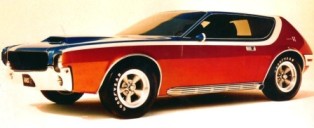 American Motors, Public domain, via Wikimedia Commons
American Motors, Public domain, via Wikimedia Commons
Mr. Teague had this idea of truncating the tail of the Javelin, and hence, he drew a design on an air sickness bag while traveling! And that sketch later made its way to the showroom! Would you believe it? This design was turned into a concept car, the AMC AMX-GT. Later, it got the green light for the production of AMC Gremlin.
Unpacking the Gremlin Car’s Aesthetics
When I first came across the picture of AMC Gremlin, I was like, “Okay, this looks a bit… odd!” Yet I felt it was somehow beautiful. Nah, I’m not playing around with your mind. Let me explain. The design of this quirky little car was, and still is, a topic of conversation. As a matter of fact, the Gremlin car wasn’t universally loved, but it’s not heavily panned either.
Gerry Dincher from Hope Mills, NC, CC BY-SA 2.0, via Wikimedia Commons
The Gremlin has a long, sloping hood and a short trunk. Yep, I said it right. And at first glance, some found it awkward, and others deemed it interesting. Well, as they say, beauty is in the eye of the beholder. Meanwhile, the rear of the Gremlin car had a kammback tail, a design element with a truncated vertical rear for improving aerodynamics.
GREMLIN EVOLUTION
Despite its late introduction, the AMC Gremlin managed a modest 28,560 sales in the 1970 model year. Better yet, total American Motors sales were up sharply, climbing more than 100,000 units for 1970, so the Gremlin was adding business rather than cannibalizing existing AMC sales. Sales for 1971, its first full model year, were 76,908.
In 1971, the smaller six-cylinder engine was dropped and a bigger 258 cu. in. (4,235 cc) version became optional. The switch to net horsepower ratings for 1972 reduced the 232 and 258 engines to 100 and 110 net horsepower (75 kW and 82 kW), respectively, although they were mechanically unchanged from 1971. More helpful was a new automatic transmission; AMC called it Torque Command, but it was actually Chrysler’s TorqueFlite 904, which AMC quietly arranged to buy from its rival. Whatever the name, the automatic was a vast improvement over the archaic Borg-Warner “Shift Command” transmission it replaced. Gremlin buyers could also now order front disc brakes for an extra $47.25, providing notably better stopping power.
The stock AMC Gremlin V8 had a single two-barrel carburetor and rather mild tuning. Charlie has added Hedman exhaust headers, Edelbrock Performer aluminum intake manifold and four-barrel carburetor, a seven-blade aluminum fan, and a high-output ignition coil. At a guess, it probably produces at least 40 horsepower (30 kW) more than it did when it left the factory. (Photo: “gremmieengine1” 2006 Gremmie; used with permission)
More interestingly, starting in 1972, you could get a Gremlin with V8 engine. It was not a great surprise — Teague had told the press back in 1970 that they would offer a V8 eventually and the Hornet had offered an optional 304 cu. in. (4,977 cc) V-8 from the start. The Gremlin’s V8, with a single two-throat carburetor, was credited with a modest 150 net horsepower (112 kW), but a healthy 245 lb-ft (332 N-m) of torque. A V8 Gremlin with TorqueFlite could run 0-60 mph (0-97 km/h) in around 8.5 seconds and the performance hardware AMC had offered for the same engine in the Javelin and AMX could be bolted on. The V8 cost $154 and added nearly 200 extra pounds (90 kg), but it made the Gremlin a real sleeper. Alas, the following year was the first OPEC oil embargo, making the demand for a relatively thirsty V8 subcompact somewhat limited.
Sales climbed steadily each year through 1974 — the Gremlin’s peak, with 171,128 sold. Along the way, there were a number of minor styling revisions and some jazzy trim packages, notably the X package (side stripes, slotted wheels, and some other trim) and the Levi’s Edition, which gave the seats upholstery that looked like blue denim, complete with Levi’s brass studs, yellow-orange stitching, and tags.
This 1976 AMC Gremlin has the 258 cu. in. (4,235 cc) six, this year rated at 95 net horsepower (71 kW), and a column-shifted three-speed automatic. Unlike Charlie’s car, this survivor is in remarkably stock condition, still sporting its original wheelcovers.
In 1977, the Gremlin received a new engine option: a Volkswagen-designed 121 cu. in. (1,984 cc) four. This was a derivative of the Volkswagen-Audi EA831 engine, also found in some contemporary Audis and the Porsche 924, albeit with a two-throat Holley-Weber carburetor rather than the Porsche’s Bosch K-Jetronic mechanical fuel injection. AMC bought some engines from Volkswagen Group, but also paid some $60 million for manufacturing rights and tooling to build the four in-house at a plant in Richmond, Indiana.
The OHC four had only 80 hp (60 kW) and 105 lb-ft (142 N-m) of torque), but it reduced the Gremlin’s weight by nearly 200 lb (90 kg), so performance was not quite as dire as you might expect. Car and Driver clocked a four-speed 1977 AMC Gremlin X with the four-cylinder engine from 0-60 mph (0-97 km/h) in 15.3 seconds, reaching a top speed of 91 mph (146 km/h); both were acceptable figures for a late-seventies smog-controlled economy car. The four was naturally much more economical than the six and somewhat better isolated to boot. However, buyers were evidently not convinced and the four accounted for fewer than one in three Gremlin sales.
Gremlin sales had dropped steadily since 1974, a reflection of its dated styling, mediocre packaging, and a host of more sophisticated competitors, like the Volkswagen Rabbit (nee Golf), Honda Accord, and Ford Fiesta. In 1978, the Gremlin’s final year, sales were only 22,104. Nonetheless, AMC recycled the Gremlin’s mechanical package in 1979 for the slightly more conventional-looking AMC Spirit, which lingered through 1983. Total Gremlin sales were 674,492, plus 191,785 Spirits. That wasn’t much by GM standards, but it was respectable for a manufacturer with American’s limited resources.
AMC Gremlin: A Brief History
The AMC Gremlin was introduced in 1970 as a response to the growing demand for smaller, more fuel-efficient cars. The car was based on the AMC Hornet platform but was shorter and lighter, making it a true subcompact car. The Gremlin was initially available with a 2.0-liter inline-four engine that produced 100 horsepower. Later, a 3.3-liter inline-six engine was also made available, which produced 128 horsepower.
Thanks to its quirky design, affordable price, and impressive performance, the Gremlin became an instant hit. It quickly became a popular choice among drivers, especially younger drivers who were looking for an affordable and fun car.
Design
The design of the AMC Gremlin was unique, to say the least. The car featured a sloping rear end that gave it a distinctive look and improved its aerodynamics. The car’s small size also made it easy to maneuver in tight spaces, and its lightweight construction helped to improve its performance and fuel efficiency.
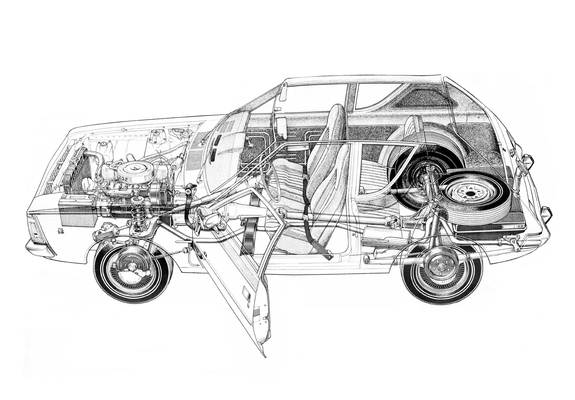
Despite its small size, the AMC Gremlin was surprisingly spacious inside. The car had plenty of legroom and headroom for both front and rear passengers, making it a comfortable choice for longer trips.
Performance
The AMC Gremlin was a fun car to drive, thanks to its lightweight construction and responsive engine. The car’s four-cylinder engine was capable of reaching 60 miles per hour in around 13 seconds, while the six-cylinder engine could do it in around 10 seconds.
The Gremlin’s handling was also impressive, thanks to its independent front suspension and rear leaf springs. The car was nimble and responsive, making it a joy to drive on twisty roads and around town.
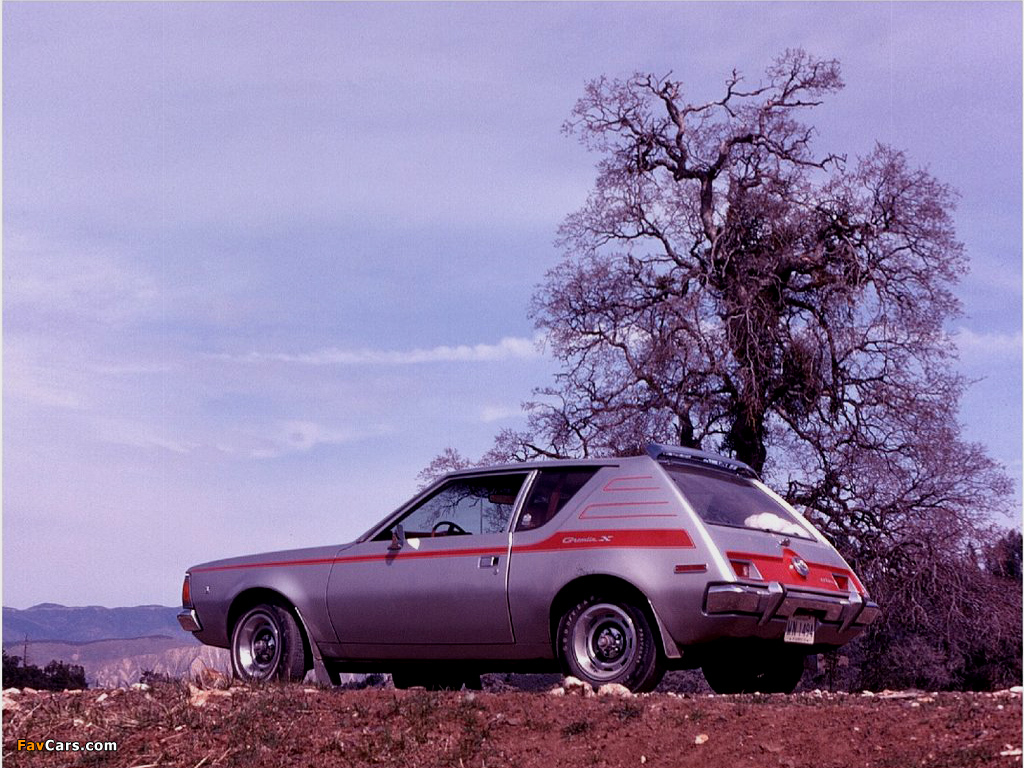
Fuel Economy
The AMC Gremlin was designed to be a fuel-efficient car, and it delivered on that promise. The base model with the four-cylinder engine had an estimated fuel economy of around 22 miles per gallon in the city and 30 miles per gallon on the highway. The six-cylinder models were slightly less fuel-efficient, with an estimated fuel economy of around 20 miles per gallon in the city and 28 miles per gallon on the highway.
AMC Gremlin Price
The cost of the AMC Gremlin varied depending on the model and the year. When it was first introduced in 1970, the base model had a starting price of around $1,900. By 1978, the final year of production, the base model had a starting price of around $3,500.
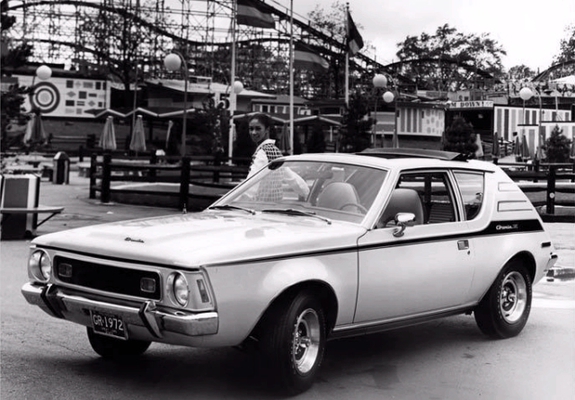
Legacy
Despite its short production run, the AMC Gremlin left a lasting legacy on the automotive industry. Its quirky design and affordable price made it a hit with drivers, and it paved the way for other subcompact cars in the years that followed. Today, the Gremlin is considered a classic car, and it continues to have a dedicated following of enthusiasts.
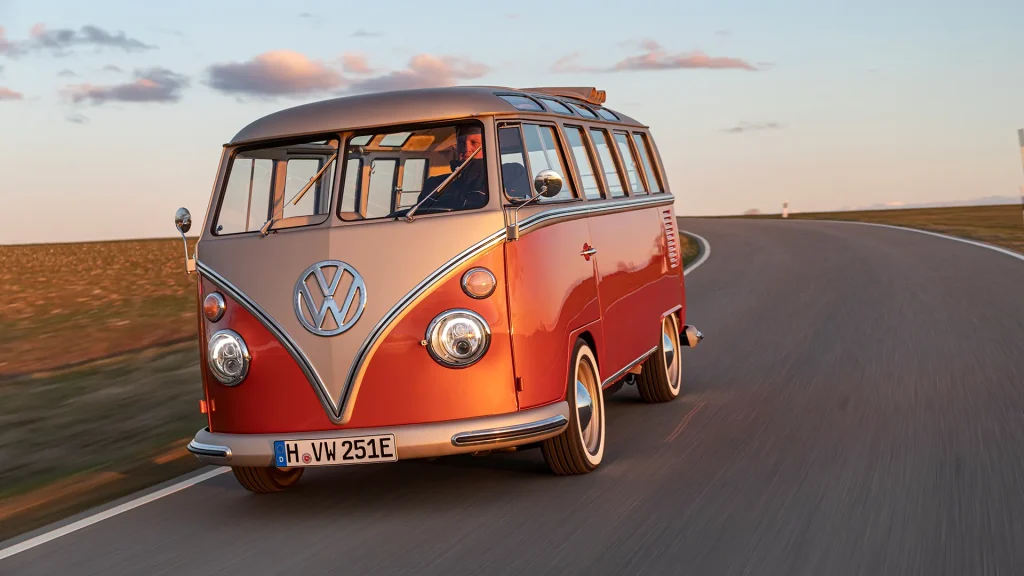
VW Minibus: A Real Vintage Car
In this article, we’ll take a deep dive into the history, features, and appeal of the VW Minibus.
Frequently Asked Questions (FAQs)
Q1. What does AMC stand for?
AMC stands for American Motors Corporation. It was an American automobile company that was active from 1954 to 1987.
Q2. How many AMC Gremlins were produced?
During its eight-year production run, AMC produced a total of 671,475 Gremlins.
Q3. What was the most powerful engine option for the AMC Gremlin?
In 1977, American Motors Corporation (AMC) introduced the 3.8-liter V6 engine as the most powerful engine option for the AMC Gremlin. This engine produced 120 horsepower and 220 pound-feet of torque.
Q4. Was the AMC Gremlin a reliable car?
The AMC Gremlin had a reputation for being a reliable car. It’s simple design and sturdy construction made it easy to maintain and repair, and many Gremlins lasted for decades with proper care.
Q5. Did the AMC Gremlin have any safety issues?
The AMC Gremlin did have some safety issues, particularly in its early years of production. The car’s rear fuel tank was located near the rear bumper, which made it vulnerable to rear-end collisions. Fortunately, later models addressed this issue, and as a result, the Gremlin became a safer car overall.
Q6. Can you still find AMC Gremlins on the road today?
Yes, you can still find AMC Gremlins on the road today. While becoming increasingly rare, dedicated enthusiasts keep these classic cars running and on the road.
ENTER THE AMC GREMLIN
The production AMC Gremlin made its debut a few months after its larger brother. It was introduced to the public, amusingly enough, on April 1, 1970. It carried a starting price of $1,879 FOB Kenosha, although that was for the most basic model, with a fixed rear window and no back seat at all. (Only about 3,000 of these price-leader fixed-window cars were sold and that version was soon dropped.) A four-seat Gremlin with flip-up rear glass started at $1,959, which compared well with the $1,995 starting price of Ford’s Maverick.
All early Gremlins used the same inline sixes found in AMC’s bigger cars, either the 199 cu. in. (3,258 cc) version with 128 gross hp (95 kW) or the 232 cu. in. (3,801 cc) version with 145 hp (108 kW). Standard also were a three-speed manual transmission with a non-synchronized low gear and four-wheel drum brakes.
Dynamically, the Gremlin’s hand-me-down mechanicals produced some decidedly mixed results. The shortened wheelbase made the rear seat basically uninhabitable except for very small children, although cargo room was reasonable, especially with the seat folded down. With the same engines as the Hornet and somewhat less weight, the Gremlin had respectable acceleration; in January 1971, Car and Driver clocked a 1971 AMC Gremlin with the big six and manual shift from 0-60 mph (0-97 km/h) in a sprightly 10.5 seconds.
On the other hand, because the Gremlin had so few purpose-built components, it was not particularly light for a subcompact, it was nose-heavy, and the manual steering was painfully slow. Worse, the shortened rear springs let the axle hop around in hard braking. The Gremlin was not well suited to enthusiastic cornering or panic stops.
The 1975 AMC Gremlin was 170.3 inches (4,326 mm) long, 9.0 inches (229 mm) longer than the 1970½ model, thanks to its bigger bumpers. Charlie’s 1975 Gremlin X has non-stock alloy wheels, although the side stripe was part of the original X package. (Photo: “Gremlin side” 2006 Gremmie; used with permission)
The Gremlin’s fuel economy was also disappointing, at least compared to its import competitors. Conservative highway driving could reach 25 mpg (9.4 L/100 km), but in harder use, the heavy body and big six would drop mileage below 20 mpg (11.8 L/100 km), not exactly in keeping with its economy-car mission.
THE THREAT
For the longest time, nobody in Detroit took Volkswagen seriously. Who could blame them? The Beetle was an anachronism, no matter how much steady but glacier-like evolution it underwent, no matter how conscientious its assembly or clever its ads. By the end of the 1960s, however, it was selling more than half a million copies a year in the U.S. and actually topped the overall sale charts in some important West Coast markets, like Los Angeles.
This was bad news for all of the U.S. automakers, but it was particularly threatening for American Motors Corporation. AMC had made its mark in the late 1950s and early 1960s as a purveyor of economy cars, alternatives to what George Romney called “Detroit dinosaurs,” but by the late sixties, its compact Rambler American was moribund, stigmatized as a car for little old ladies. AMC’s total sales for 1968 were 272,696, climbing a bit to 281,297 for 1969; Volkswagen’s sales for the same model years were 582,009 and 548,904 respectively. The Volkswagen was certainly problematic for Chevrolet and Ford, but for AMC, it was a deadly threat. Beyond that, Toyota and Datsun were beginning to emerge as real contenders. Something had to be done.
American Motors was already preparing a new compact, the AMC Hornet, to replace the aging Rambler American for 1970, but American management realized that, like the contemporary Ford Maverick, the Hornet was basically a new bottle for the same old wine. Despite new styling, a longer wheelbase, and the revival of the storied Hornet name (which had been dropped when AMC abandoned the Hudson nameplate in 1957), the new car was not that different from the Rambler American underneath. To compete with the imports, AMC needed something different, something smaller: a genuine subcompact to take on the Beetle and its foreign brethren.
Even the shape of the rear sheet metal suggests that the AMC Gremlin is a hatchback, but it’s not; only the rear window lifts up for loading cargo. (On some early base cars, even that was fixed in place.)
You Won’t Believe These Facts About the Gremlin Car!
A Rescue Hero
Hurst PerformanceUploader: CZmarlin ], Public domain, via Wikimedia Commons
Between 1972 and 1974, Hurst Performance created a rescue vehicle based on the AMC Gremlin. Meanwhile, it came equipped with a winch, stretcher, and firefighting and first aid supplies. Moreover, the price of this rescue vehicle was somewhere around $11,000 to $13,000!
A Cop Car?
How about that? The Gremlin car is a cop car! Yep, the Houston Police Department’s Traffic Bureau once used the Gremlin as an experimental police vehicle. However, it didn’t lead to anything. Still a serious feat, though!
An Experimental Car
The Gremlin was a popular choice for experimenting with alternative fuels. Notably, many universities used these cars to convert them to run on natural gas, hydrogen, and even electric power.
